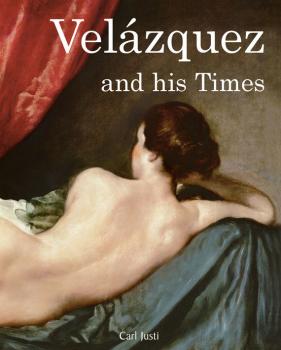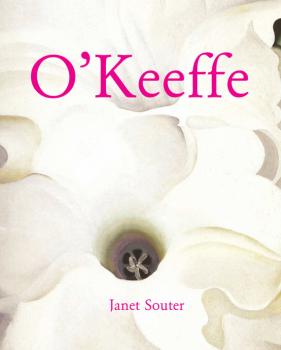Изобразительное искусство, фотография
Различные книги в жанре Изобразительное искусство, фотографияГрафика натюрморта: учебное пособие
В учебном пособии рассмотрены основы теории, методики и практики изображения графического натюрморта применительно к задачам обучения художников декоративно-прикладного искусства. Богатый иллюстративный материал демонстрирует разнообразную технику изображения различных типов натюрмортов. Адресовано студентам высших учебных заведений, готовящих художников для сферы декоративно-прикладного искусства, может быть полезно учащимся средних художественных заведений, а также всем, кто интересуется искусством.
Velasquez
Diego Rodríguez de Silva y Velázquez (June 1599 – August 6 1660), known as Diego Vélasquez, was a painter of the Spanish Golden Age who had considerable influence at the court of King Philip IV. Along with Francisco Goya and Le Greco, he is generally considered to be one of the greatest artists in Spanish history. His style, whilst remaining very personal, belongs firmly in the Baroque movement. Velázquez’s two visits to Italy, evidenced by documents from that time, had a strong effect on the manner in which his work evolved. Besides numerous paintings with historical and cultural value, Diego Vélasquez painted numerous portraits of the Spanish Royal Family, other major European figures, and even of commoners. His artistic talent, according to general opinion, reached its peak in 1656 with the completion of Las Meninas, his great masterpiece. In the first quarter of the 19th century, Velázquez's style was taken as a model by Realist and Impressionist painters, in particular by Édouard Manet. Since then, further contemporary artists such as Pablo Picasso and Salvador Dalí have paid homage to their famous compatriot by recreating several of his most famous works.
The Book of Wonder
The most renowned travel story of the Middle Ages has never lost its allure. A story of true wonder, Marco Polo's experiences as well as the reported myths, transport us to the heart of Central Asia, China, Indochina, and the Indian Ocean. The original manuscripts were accompanied with illustrations realised from the few descriptions made by the traveller. Following in the footsteps of Marco Polo, the various illustrations found here will send the reader on the path to discovering the distant lands as we know them today.
O'Keeffe
In 1905 Georgia travelled to Chicago to study painting at the Art Institute of Chicago. In 1907 she enrolled at the Art Students’ League in New York City, where she studied with William Merritt Chase. During her time in New York she became familiar with the 291 Gallery owned by her future husband, photographer Alfred Stieglitz. In 1912, she and her sisters studied at university with Alon Bement, who employed a somewhat revolutionary method in art instruction originally conceived by Arthur Wesley Dow. In Bement’s class, the students did not mechanically copy nature, but instead were taught the principles of design using geometric shapes. They worked at exercises that included dividing a square, working within a circle and placing a rectangle around a drawing, then organising the composition by rearranging, adding or eliminating elements. It sounded dull and to most students it was. But Georgia found that these studies gave art its structure and helped her understand the basics of abstraction. During the 1920s O’Keeffe also produced a huge number of landscapes and botanical studies during annual trips to Lake George. With Stieglitz’s connections in the arts community of New York – from 1923 he organised an O’Keeffe exhibition annually – O’Keeffe’s work received a great deal of attention and commanded high prices. She, however, resented the sexual connotations people attached to her paintings, especially during the 1920s when Freudian theories became a form of what today might be termed “pop psychology”. The legacy she left behind is a unique vision that translates the complexity of nature into simple shapes for us to explore and make our own discoveries. She taught us there is poetry in nature and beauty in geometry. Georgia O’Keeffe’s long lifetime of work shows us new ways to see the world, from her eyes to ours.
German Painting
In a country only unified since 1871, German culture and art is derived from ancient tradition. Studying German painting requires viewing it on a different scale, larger than the current geographical frontiers. From the Middle Ages through to the New Objectivity of the 20th century, we introduce you to the German artists who have marked history: Albrecht Dürer, the Romantic Caspar David Friedrich, and the Expressionist Otto Dix. Original in its themes, German painting always seeks harmony whilst remaining inquisitive.
Frida Kahlo
Behind Frida Kahlo’s portraits, lies the story of both her life and work. It is precisely this combination that draws the reader in. Frida’s work is a record of her life, and rarely can we learn so much about an artist from what she records inside the picture frame. Frida Kahlo truly is Mexico’s gift to the history of art. She was just eighteen years old when a terrible bus accident changed her life forever, leaving her handicapped and burdened with constant physical pain. But her explosive character, raw determination and hard work helped to shape her artistic talent. And although he was an obsessive womanizer, the great painter Diego Rivera was by her side. She won him over with her charm, talent and intelligence, and Kahlo learnt to lean on the success of her companion in order to explore the world, thus creating her own legacy whilst finding herself surrounded by a close-knit group of friends. Her personal life was turbulent, as she frequently left her relationship with Diego to one side whilst she cultivated her own bisexual relationships. Despite this, Frida and Diego managed to save their frayed relationship. The story and the paintings that Frida left us display a courageous account of a woman constantly on a search of self discovery.
Erotic Photography
Erotic photo art has lost much of its exquisite soul since Playboy and other girlie monthlies repackaged the human body for mass-market consumption. Like much painting, sculpture and engraving, since its beginning photography has also been at the service of eroticism. This collection presents erotic photographs from the beginning of photography until the years just before World War II. It explores the evolution of the genre and its origins in France, and its journey from public distrust to the large audience it enjoys today.
Constable
John Constable was the first English landscape painter to take no lessons from the Dutch. He is rather indebted to the landscapes of Rubens, but his real model was Gainsborough, whose landscapes, with great trees planted in well-balanced masses on land sloping upwards towards the frame, have a rhythm often found in Rubens. Constable’s originality does not lie in his choice of subjects, which frequently repeated themes beloved by Gainsborough. Nevertheless, Constable seems to belong to a new century; he ushered in a new era. The difference in his approach results both from technique and feeling. Excepting the French, Constable was the first landscape painter to consider as a primary and essential task the sketch made direct from nature at a single sitting; an idea which contains in essence the destinies of modern landscape, and perhaps of most modern painting. It is this momentary impression of all things which will be the soul of the future work. Working at leisure upon the large canvas, an artist’s aim is to enrich and complete the sketch while retaining its pristine freshness. These are the two processes to which Constable devoted himself, while discovering the exuberant abundance of life in the simplest of country places. He had the palette of a creative colourist and a technique of vivid hatchings heralding that of the French impressionists. He audaciously and frankly introduced green into painting, the green of lush meadows, the green of summer foliage, all the greens which, until then, painters had refused to see except through bluish, yellow, or more often brown spectacles. Of the great landscape painters who occupied so important a place in nineteenth-century art, Corot was probably the only one to escape the influence of Constable. All the others are more or less direct descendants of the master of East Bergholt.
Art of the Eternal
Since the first funerary statues were placed in the first sepulchres, the ideas of death and the afterlife have always held a prominent place at the heart of the art world. An unlimited source of inspiration where artists can search for the expression of the infinite, death remains the object of numerous rich illustrations, as various as they are mysterious. The ancient Egyptian Book of the Dead, the forever sleeping statues on medieval tombs, and the Romantic and Symbolist movements of the 19th century are all evidence of the incessant interest that fuels the creation of artworks featuring themes of death and what lies beyond it. In this work, Victoria Charles analyses how, through the centuries, art has become the reflection of these interrogations linked to mankind’s fate and the hereafter.
Kandinsky
Wassily Kandinsky (1866-1944) was a Russian painter credited as being among the first to truly venture into abstract art. He persisted in expressing his internal world of abstraction despite negative criticism from his peers. He veered away from painting that could be viewed as representational in order to express his emotions, leading to his unique use of colour and form. Although his works received heavy censure at the time, in later years they would become greatly influential.









